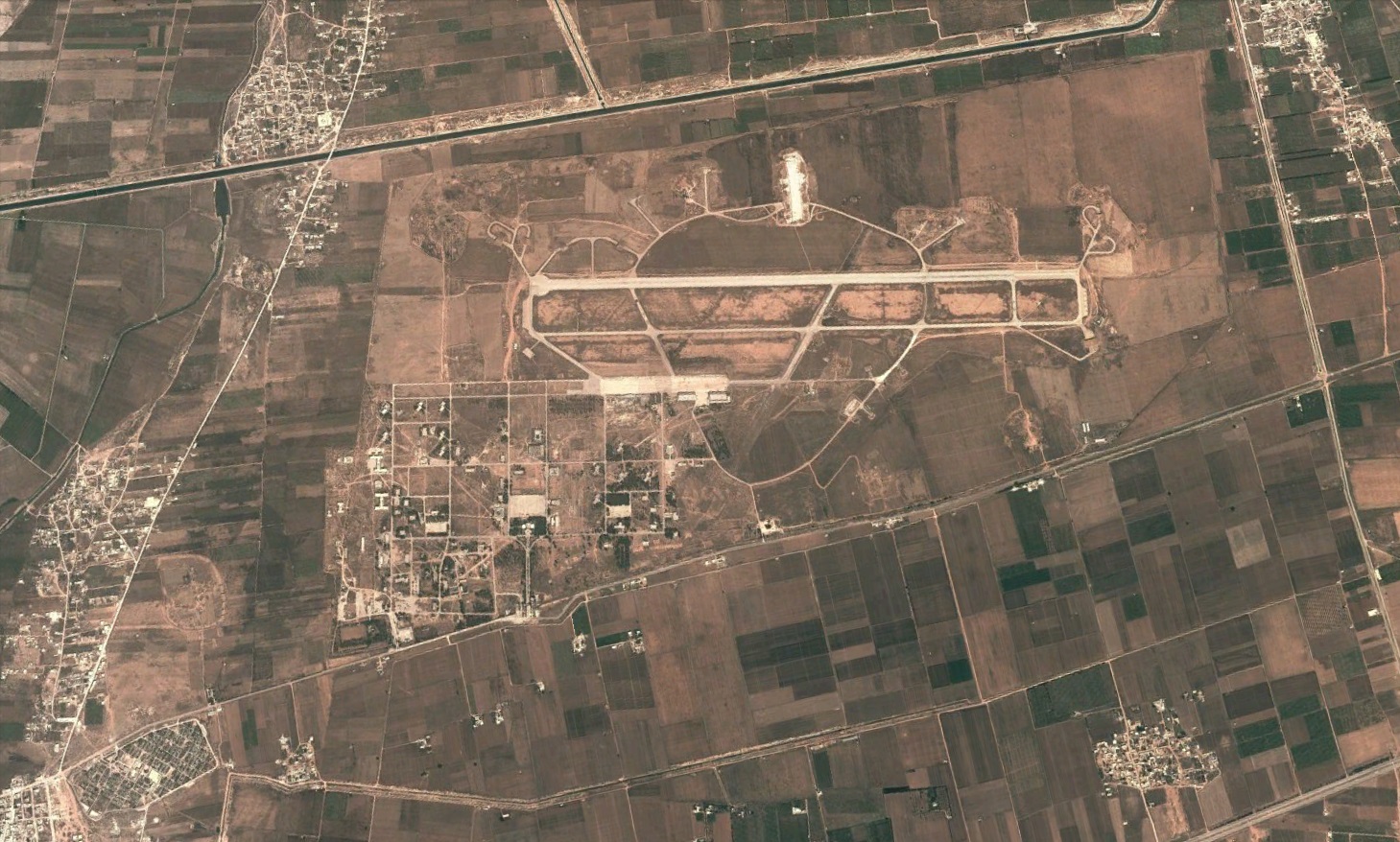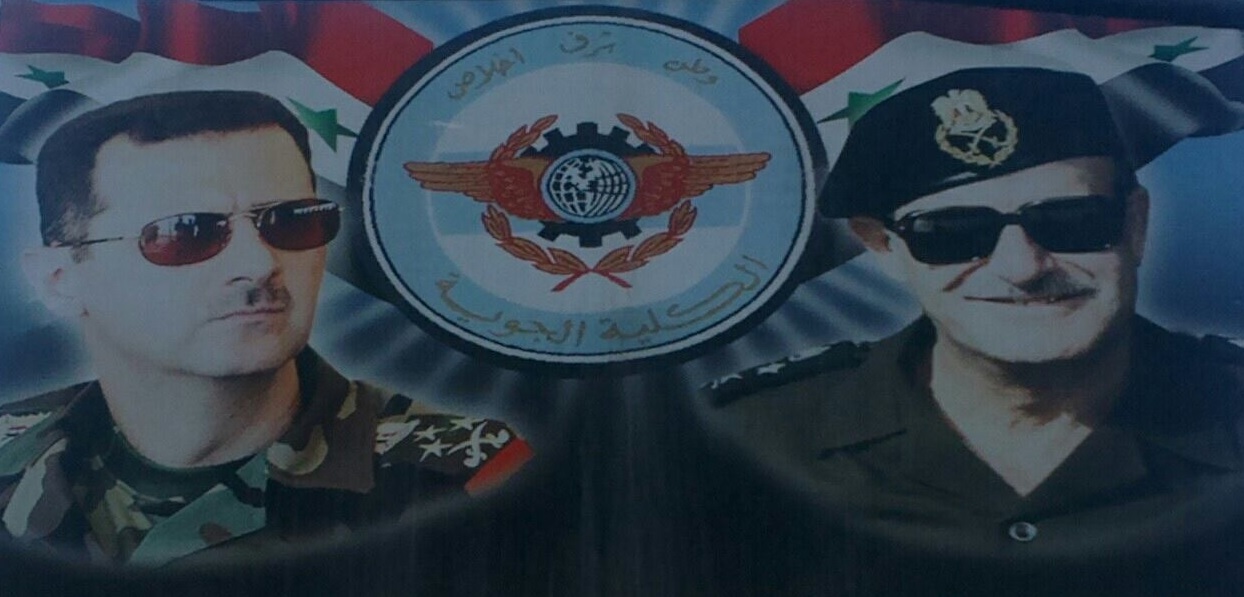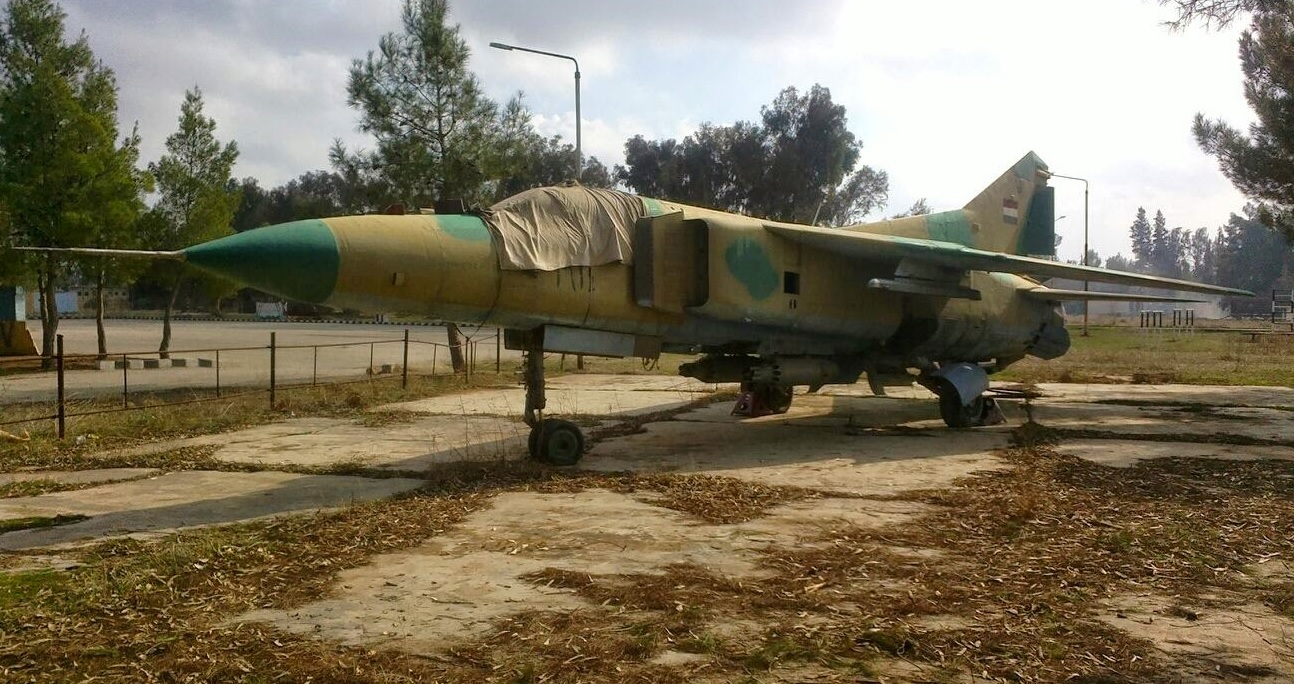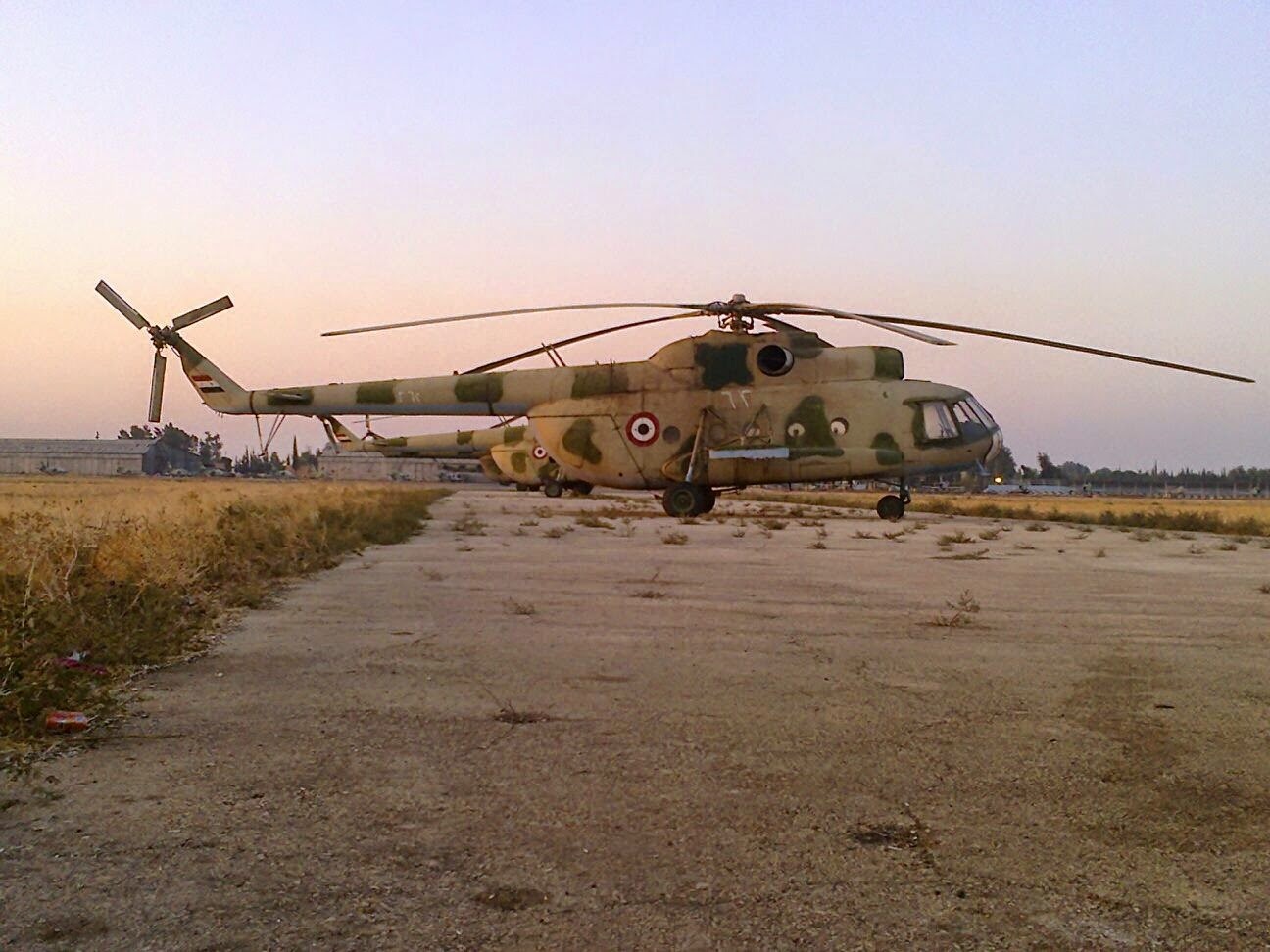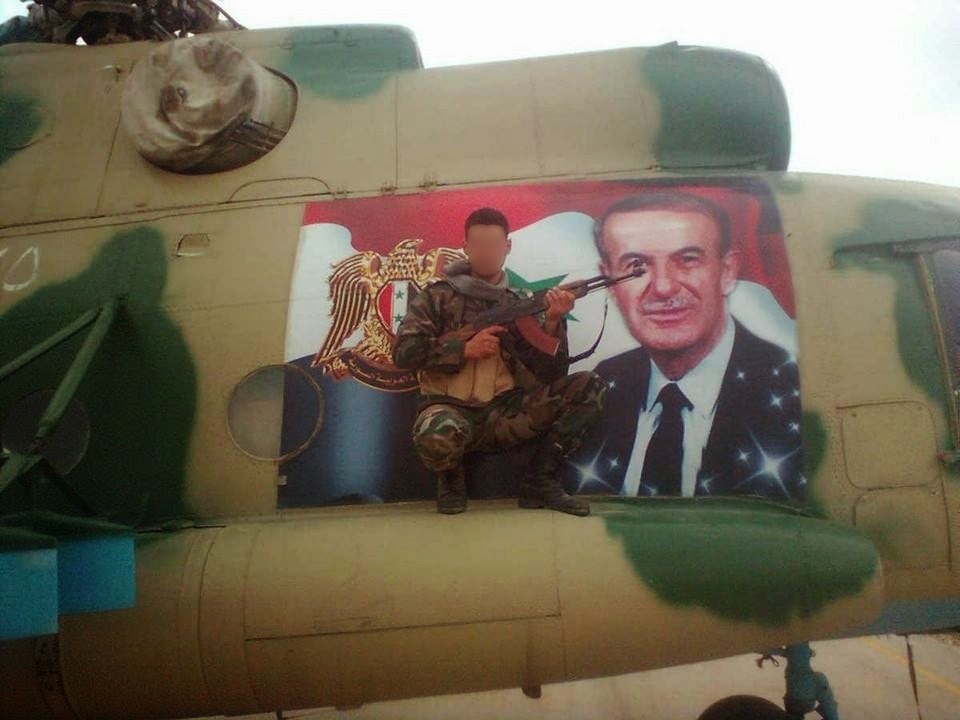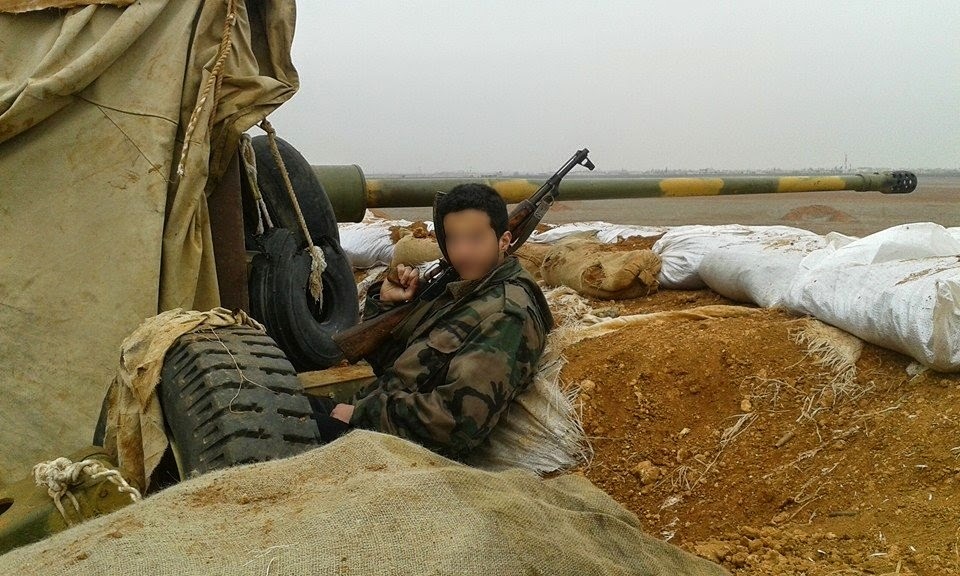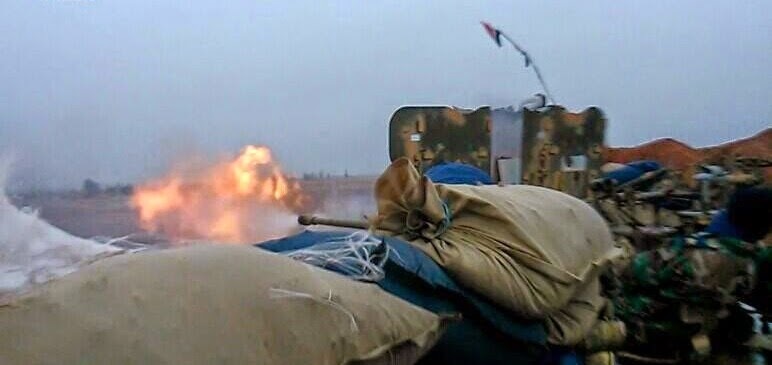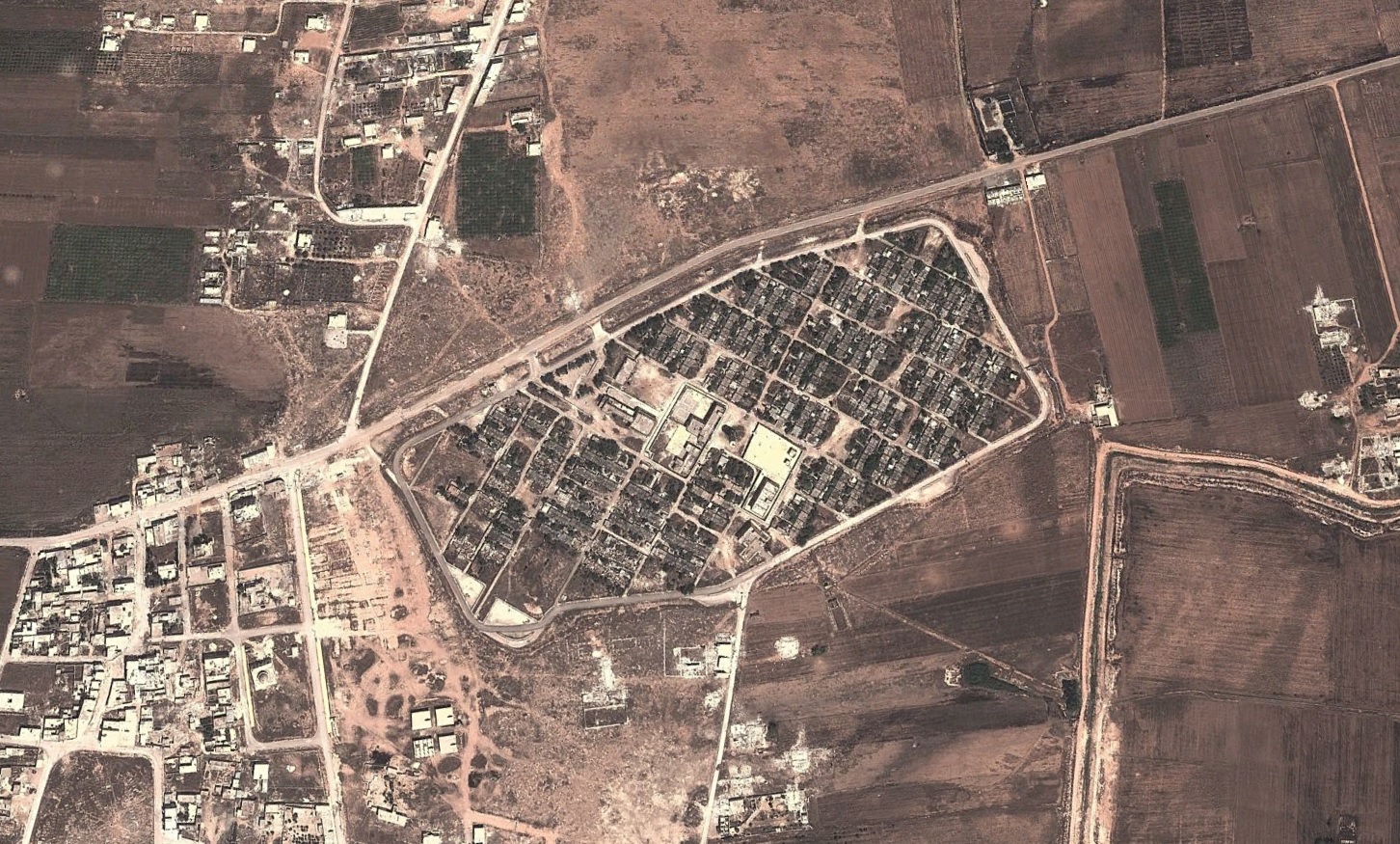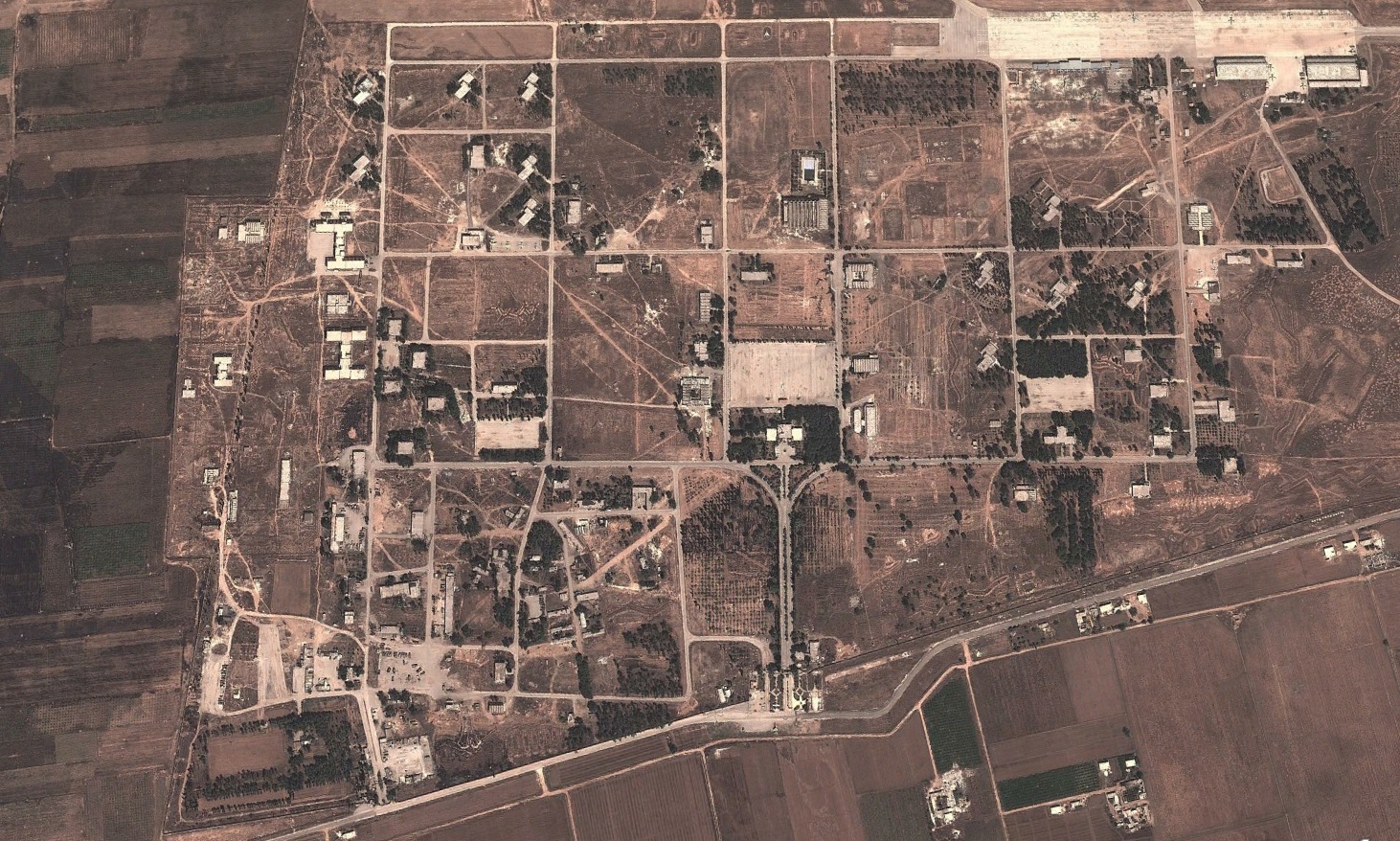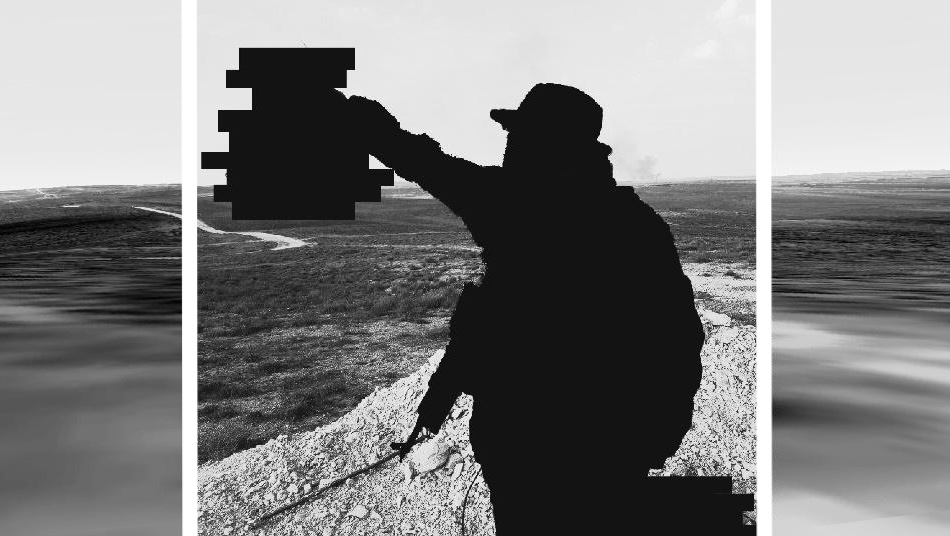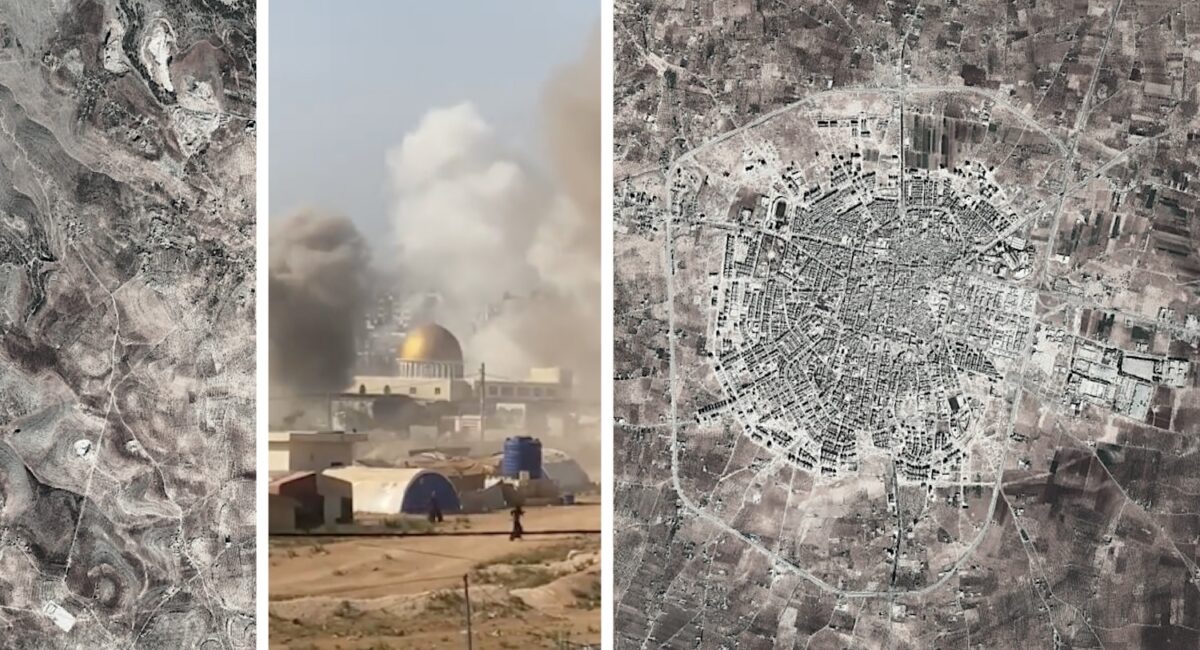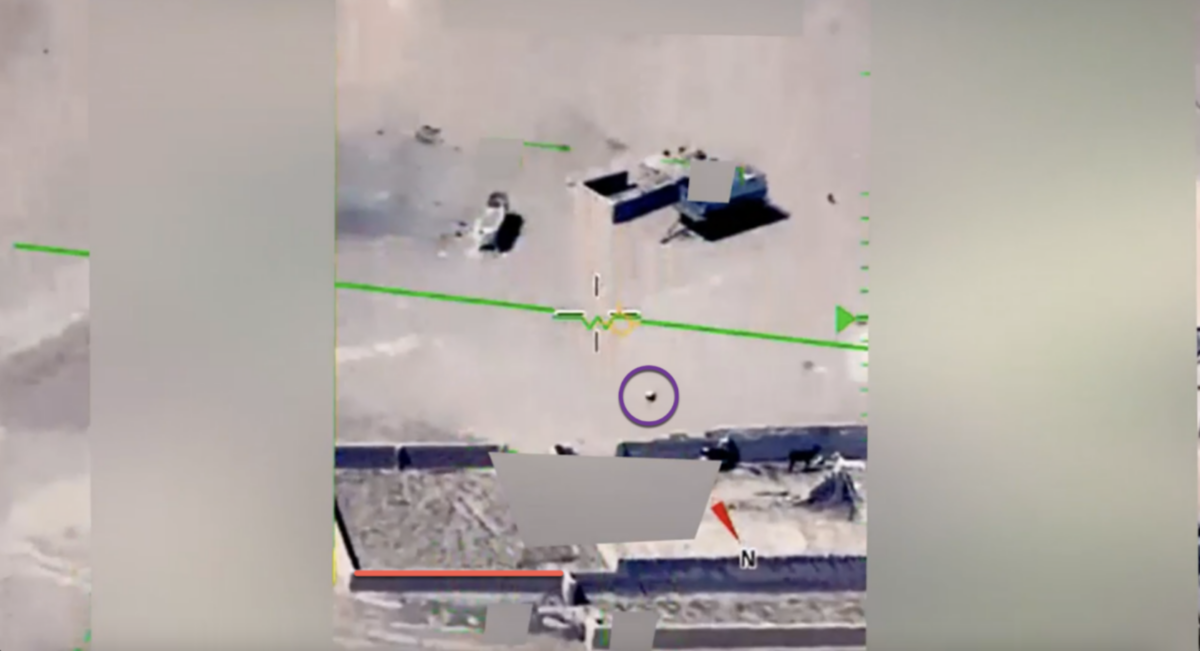Battlefront Syria: Kweres airbase
Kweres airbase, also known as Rasm al-Abboud, Quweires and a host of other names, has reportedly been under heavy pressure by the fighters of the Islamic State since early May 2015, which seek to capture the airbase. A social media censorship imposed by the Islamic State have caused its fighters to refrain from posting any images or information on the offensive, making it difficult to understand what is actually going on at Kweres. The censorship was a result of the painful lesson learned from the assault on Tabqa airbase, during which the defenders could pinpoint the location of the fighters of the Islamic State by the information they posted online, and is nowadays enforced during every major offensive undertaken by the Islamic State.
Kweres airbase is one of the seventeen airbases that remain active while under the control of the Syrian Arab Air Force (SyAAF) and Syrian Arab Army (SyAA). Kweres has little value as an airbase however and has already been under constant siege since December 2012. But against all odds, the airbase remains operational. While originally completely surrounded by the Free Syrian Army, the siege was taken over by fighters of the Islamic State after their rapid expansion in Eastern Syria just shy of a year ago. The fighters of the Islamic State have stormed the base on a number of occasions, but these attacks were likely focused at probing the airbase’s defences rather than capturing the base. Nonetheless, the SyAAF has flown plenty of sorties to protect the airbase and at least one Fateh 110 ‘Tishreen’ surface-to-surface missile has been fired at the airbase’s belligerants in order to boost morale.[1]
Despite the fact that the airbase remains fully operational, its military value is currently the lowest of the SyAAF’s airbases. This and the fact that Kweres comes close to being an impenetrable fortress was apparently also understood by the Islamic State, which never made any serious attempt to capture the airbase even though they surround it completely. Although sporadic artillery, mortar and rocket fire frequently hit the base, this is not known to have caused any serious losses. Surprisingly, fighters of the Islamic State also utilise UAVs to spot targets for the U.S. made 155mm M198 howitzers captured in Iraq, which are being now used to shell the base and its surroundings.[2] The Islamic State’s tactics for dealing with Kweres has until thus far largely been the same as those of the Free Syrian Army, which lacked the manpower to storm the base. A SANA TV crew was the last to have visited the airbase in February 2014, a video and images of which can be seen here, here and here. No TV crew has been sent to document the current offensive, as the last time SANA did such a thing, the airbase in question (Tabqa) fell just one day after it was proudly stated that the fighters of the Islamic State were held off.
Exactly why the Islamic State is now making a move on the airbase can be explained by the fact that IS is frantically looking for large propaganda stunts to retain the detterence it once boasted, and capturing an airbase provides exactly that. The Islamic State’s offenses in Syria are currently not achieving their intended goals as the fighters of the Islamic State have so far proven unable to capture Deir ez-Zor and T.4 airbase, which are even more fortified than Kweres airbase. The summer of 2014 saw Division 17, Regiment 121, Brigade 93, Tabqa airbase and the Shaer gas field all falling for the then seemingly invincible fighters of the Islamic State, but apart from Shaer, all were already surrounded for a long time with the soldiers trapped inside waiting for the imminent final assault. Deir ez-Zor and T.4 are a whole different story, and their capture, if at all possible, would require such a large amount of manpower that it would present nothing more than a pyrrhic victory for the Islamic State.
Kweres, the entry sign of which can be seen above, was originally constructed by Poles in the early sixties to serve as the SyAAF’s main training base. It officially remains home to the Aviation Academy of the Syrian Arab Air Force (SyAAF), comprised of the Basic Flying School, using the MBB-SIAT 223K1 Flamingo and the PAC MFI-17 Mushshak, and the Advanced Flying School, using the L-39ZO and the L-39ZA. Most SyAAF pilots once got their wings here, which makes the airbase of high symbolic value.
The Basic Flying School quickly wound down operations after the start of the Civil War however, and its aircraft remain stored in various parts of the airbase. The SyAAF has thus been unable to train new pilots in Syria itself, further increasing the burden on the already tired and often depressed pilots, most of which are fully aware that more often than not civilians are on the receiving end of the rockets and (barrel) bombs. Another training facility; Mennegh, once home to the Helicopter Flying School, was already overrun on the 5th of August 2013. A limited form of advanced training was continued on L-39s and helicopters present elsewhere in Syria.
Kweres’s resident L-39s had the dubious honour of being the first aircraft to become actively involved in suppressing the rebellion in the end of July 2012, when the Advanced Flying School deployed its L-39ZOs and L-39ZAs on bombing runs over Aleppo and its suburbs. These sorties resulted mostly in civilian targets such as hospitals and schools being hit, and unsurprisingly led to numerous civilian casualties. The number of L-39 sorties over Aleppo gradually decreased over time however, and completely came to a halt in May 2013.
As the number of L-39 sorties gradually decreased in number, so did the L-39 fleet in size, which suffered a heavy blow when Kshesh, nowadays known for being the site of Syria’s first rebel air force, was captured on the 12th of February 2013. The surviving L-39s were then distributed between Hama, Tabqa and Aleppo International Airport/Neyrab, where some were overhauled and modified to carry 80mm B-8 rocket pods. The fleet of L-39s based at Kweres, originally numbered at around forty, remained mostly intact in terms of numbers, but was heavily affected by a lack of spare parts and mortar fire from both the Free Syrian Army and the Islamic State over the years, resulting in just over a dozen examples remaining operational in 2013.
However, when examining Kweres using satellite imagery taken on the 26th of May 2013 one can spot no less than 89 aircraft and 12 helicopters. If the base were captured, the endless rows of aircraft and helicopters will therefore still surely provide the propaganda pictures the Islamic State is craving. The condition of the impressive number of aircraft varies from operational to derelict, and the just over a dozen British-built Meteors also present at the base were abandoned here more than half a century ago. One of two MiG-23 fighters present at Kweres, both once used as instructional airframes, can be seen below.
Enough of Kweres’ L-39s remained operational to aid in the defence of the airbase however, reportedly sometimes flying up to twenty sorties a day to strike Islamic State positions around the airbase. The town of Ayn al-Jamajimah, an Islamic State strongpoint, was heavily hit in particular. One L-39 crashed during one of these sorties on the 20th of April 2015.[3]
The defence of Kweres is in hands of an unknown number of SyAA, NDF and SyAAF soldiers, airmen and mechanics, most of which present at the airbase since the start of the revolution. It is believed that the garrison was reinforced in the summer of 2014 after the Free Syrian Army was forced to abandon its positions around the airbase in light of the Islamic State’s advance.
An S-125 surface-to-air missile (SAM) battery located closely to Kweres evacuated all its equipment and personnel to Kweres to prevent being overrun by the Free Syrian Army somewhere in the 2012-2013 timeframe. Although the SAM battery was subsequently re-activated at Kweres and remained operational as of 2013, it is deemed unlikely that the battery currently remains active. No threat from the air is present and the personnel manning the battery would likely be of more value defending the airbase from ground attacks.
As Kweres is completely surrounded by the Islamic State, the only lifeline between the airbase and the rest of regime-controlled Syria is the SyAAF’s helicopter fleet, which continuously supplies the airbase with anything ranging from food to weaponry and their munitions. One squadron of Mi-8s was permanently detached to Kweres in part to aid in this task.
The defenders of Kweres almost solely rely on light weapons in the defence of the airbase. The state of the SyAAF and the fact that large cargo planes present perfect targets for the fighters of the Islamic State surrounding the base has meant that no heavy weaponry could be flown in: The weapons that are available to the defenders were flown in by helicopter. This weaponry included SVD ‘Dragunov’ marksman rifles, Iranian 12.7mm AM.50 anti-materiel sniper rifles, (heavy) machine-guns, RPG-7s, ATGMs and a number of Russian night sights intended for the AKM to enable the defenders to better fight at night.
The twenty-six anti-aircraft guns present at the airbase (two from the nearby S-125 SAM site) provide the heavy firepower as no tanks or artillery are stationed at the airbase. This meant the defenders had to be creative, and the 14.5mm ZPU-4s, 23mm ZU-23s and 57mm AZP S-60s taken from four anti-aircraft emplacements were strategically placed throughout the airbase to attain the maximum amount of tactical value, sometimes even on top of Kweres’ eleven Hardened Aircraft Shelters (HAS). It is interesting to note that most of the ZPU-4s had two of their four barrels taken away, which were then put on DIY mounts so as to increase the amount of ground covered by heavy weaponry.
The flat terrain surrounding the airbase is greatly in favour of the defenders, a tactical advantage which forces the fighters of the Islamic State to run through empty fields without much cover in order to reach the airbase. This advantage is especially apparent in the North, East and South. Surprisingly, attacking the North-Eastern corner was exactly what the fighters of the Islamic State did. The fighters even succeeded in capturing two of the Hardened Aircraft Shelters, but were quickly driven out again. The photos of three 57mm AZP S-60 gun emplacements below give an idea of the flat terrain, and clearly show that any attempt to cross the vast empty fields would result in heavy losses.
To further strengthen the perimeter, the defenders have made great use of the eleven Hardened Aircraft Shelters located at the Northern and Eastern part of the airbase. These Hardened Aircraft Shelters have literally been turned into fortresses, and most have either one anti-aircraft gun or heavy machine-gun installed on top. They have also been designed to withstand large bombs dropped by aircraft, so the Islamic State has no chance to destroy them for instance by using artillery. Trenches on and surrounding the HAS provide cover for the garrisons of soldiers tasked with the protection of their assigned corridor. Plenty of ammunition present inside the Aircraft Shelters guarantee trying to capture one would prove to be an extremely arduous task. In addition, huge sand barricades erected throughout the base cover any movement by the defenders, which makes it easier to resupply each garrison. The defenders also operate a number of technicals armed with ZU-23s and heavy machine-guns, which are utilised as a quick-reaction force and can be deployed at any part of the base should the need arise.
It should not be forgotten that the airbase is already completely surrounded since two-and-a-half years, which gave the defenders plenty of time to perfect their defences. Numerous small attacks mostly carried out by the Islamic State will thus only have helped the defenders in learning to properly keep the airbase secured.
Heavy fighting has also been going on in the Military Housing Block, located West of the airbase and seen in the sattelite imagery below. Heavy artillery shelling by the Islamic State has destroyed much of the complex, and the remaining structures and trenches are subject to intense house-to-house fighting. As the Complex (pictured below) is an important key in the defence of the Western side of the airbase, the defenders will have to continue to allocate resources in order to hold the Housing Complex, or otherwise risk endangering the entire base.
If the Military Housing Block proves unable to hold, the second (and also last) defensive line will have to stop the fighters of the Islamic State to prevent the fighters from flooding into the airbase. This last line, satellite imagery of which can be seen below, too consists of heavily fortified buildings, trenches, anti-aircraft guns and heavy machine guns.
Although Kweres is completely surrounded, SyAA and NDF troops stationed on the Eastern side of Aleppo could theoretically mount an offensive in an effort to prevent the airbase being overrun. However, it is extremely unlikely that such an offensive would ever be carried out by the already overstretched troops based in Aleppo as Kweres simply doesn’t have enough strategic value to justify the waste of precious manpower and resources.
It is more likely that if the situation at the airbase becomes too critical, the defenders will attempt to fight their way out in the direction of Aleppo, perhaps aided by the SyAAF’s fighter-bombers and helicopters.
In an effort to convince the defenders of Kweres that they were indeed going to be overrun, the Islamic State made pamflets offering the defenders a chance to repent and thus supposedly escape the fate of mass execution.
”Allah ruled that you must be killed by the sword. We swear that we will have no mercy for anyone of you, so repent and break with this infidel regime. We accept your repentance if you surrender before we come over to you, by then the tyrant (Assad) will not be able to help you. Keep in mind the fate your comrades in Tabqa Airbase met.
Contact the Islamic State’s men on the following telephone numbers:
0937699604
0935007806
WhatsApp: 00905378489193”
It is highly unlikely that any of the defenders will seriously consider defecting to the Islamic State. The morale in the airbase remains high and the men, most of which have already living together for more than four years, will probably rather die than surrender to the Islamic State.
A photo collage of some of the fallen defenders was published on the 7th of May 2015 by one of the defenders, commemorating eleven KIAs so far, including the commander of Kweres: General al-Muhanna.
Of course, the Syrian Civil War has in its four years of fighting shown many a time how erroneous certain predictions about which party is going to win which battle can turn out to be. However, considering the extensive defences and other aspects in favour of the base’s current occupants outlined in this article, it can be expected that Kweres airbase will not fall into the Islamic State’s hands any time soon.
In conclusion, any move on Kweres by the Islamic State comes more out of the need for a symbolic victory than from military strategy. If the Islamic State’s offensive on Kweres proves to be as large as is claimed by some sources, and should its fighters succeed in capturing the airbase, it will very likely provide the Islamic State with what they’re looking for.
